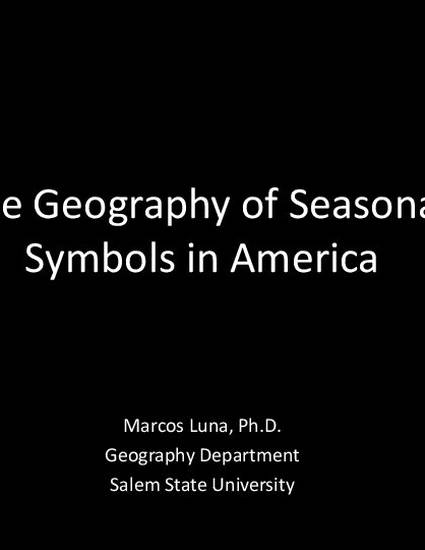
Presentation
The Geography of Seasonal Symbols in America
Association of American Geographers
(2013)
Abstract
The four-seasons motif is one of the most universally recognized and persistent themes in the American environmental imaginary. The rich imagery and symbolism around seasonality have served as important conceptual vehicles for American culture - metaphors for the human life cycle or religious faith, expressions of nostalgia for rural life, and celebrations of the American landscape and nature. Despite wide climatic diversity in the U.S. and its seasonal experiences, Americans have clung to the notion of four seasons and to specific types of seasonal associations (e.g., snow in winter, sprouting plants in spring, summer verdure, changing leaves in autumn). These seasonal associations are climatically and geographically specific. Where did this seasonal symbology come from? Why has it been so persistent? What does it mean to hold an environmental imaginary that differs from the lived experience of particular places?
I explore these questions by tracing the development of seasonal representations in American almanacs from the late 18th through 19th centuries across the country. Until the mid 19th century, the almanac was the most widely read publication in America. These publications were uniquely geographical - self-consciously fitted to specific places and regions, and yet serving as the mass media of their day. As such, their representations of seasonality were part of the development of the American environmental imaginary. This presentation will focus on two specific questions: How was seasonality represented in early American almanacs? To what extent did these representations of seasonality reflect local geography (i.e. climate, agriculture, culture, economy)?
Disciplines
Publication Date
April 11, 2013
Location
Los Angeles, California
Citation Information
Marcos Luna. "The Geography of Seasonal Symbols in America" Association of American Geographers (2013) Available at: http://works.bepress.com/marcos-luna/43/
